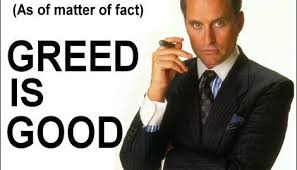
But first things first.
Houston, we have a problem
I came across an excellent article from IAG Wealth Management that explains things very clearly.
Recent study by DALBAR shows that investors consistently underperform the broad markets by significant margins. For the 30 years ending 12/31/2013 the S&P 500 Index averaged 11.11% a year. A pretty attractive historical return. The average equity fund investor earned a market return of only 3.69%.
To put this in perspective, if you invested $100,000 in 1984 in the S&P 500 and earned 11.11%, today (30 years later) you would have $2,358,275. If you started with $100,000 and invested it over the same time period at 3.69%, you would have $296,556. That is a difference of $2,061,719. It should be clear from these numbers that individual investors have a problem.
Why do individual investors perform so poorly?
Fidelity Investments conducted a study on their Magellan fund from 1977-1990, during Peter Lynch’s tenure. His average annual return during this period was 29%. This is a remarkable return over the 13 year period. Given all that, you would expect that the investors in his fund made substantial returns over that period. However, what Fidelity Investments found in their study was shocking. The average investor in the fund actually lost money.
The main reasons for the poor performance of individual investors are:
- Human Psychology: Individuals make decisions everyday with their emotions assisting their judgment.
- Performance chasing: Investors who chase performance are highly likely to lose money over the long term.
- Casino Investing: Many people think they can make money by winning the lottery.
- The “me too” lemming investment strategy: This is a common strategy of people who don’t know what they are doing with their investments.
- Fear and Greed Investing: Those are the most powerful motivations for investors. Unfortunately, investors tend to alternate between these potentially destructive emotions.

The last one is one of the biggest reasons for individual investor under-performance. The study done by Fidelity Investments should highlight this. Investors in one of the most successful mutual funds lost money during a period of time when the fund made 29% annually. According to Fidelity, investors would pull their money out of the fund during periods of poor performance, and send it in during good periods.
Are you looking for the Holy Grail?
I mentioned before that as an options newsletter editor, it doesn't surprise me that most individual traders lose money. We have many members who are with us from the very beginning 3 years ago. They enjoyed all our ups and downs. At the same time, we have many members who joined, cancelled and re-joined 4-5 times. We had some members who joined in June 2012, May 2013, February 2014 and August 2014, each time cancelling after just few weeks.
While those dates might seem random to you, I want you to take a look at our performance page. SteadyOptions produced 27% in May 2012, 29% in April 2013, 33% in January 2014 and 29% in July 2014. Do you see a pattern here? I do. Each time they joined was after an incredibly strong month. They cancelled after few weeks of less stellar performance, just in time to miss the next hot streak. When you join a newsletter, it's basically equivalent to "buying" the fund. When you cancel, you basically sell it. Isn't it a classic "buy high sell low" behavior?
There are many other reasons why some members don't stick around. Some have unrealistic expectations regarding their potential returns. They see some other newsletters promising some ridiculous returns without much effort and they expect the same from us. Others are not ready for the learning curve that the service requires. Some simply are not ready to pay for their education. As we know, there’s always free cheese in a mousetrap, but I never saw a happy a mouse there!
There are members who cancel their subscription after less than a month. Of course there are oftentimes legitimate reasons for this, but more often than not its people investing in the rear view mirror with no long-term game plan for success. As soon as a few losing trades and/or a drawdown of any kind occurs they hit the eject button and continue in their search for the Holy Grail strategy that always wins. The markets are people, and people are dominated by emotion. A rational investor knows there will be losing trades and drawdowns, yet it's amazing how often investor behavior contradicts this.

What can you do to improve your odds?
First of all, be aware that your biggest enemy is you. Dr. Van Tharp is known for breaking down the trading process into three categories that affect traders. He categorizes them by importance as follows:
- Trading strategy (10%)
- Money management (30%)
- Psychology (60%)
According to Dr. Tharp, the psychological outlook and an individual’s way of thinking towards trading is the most important factor for success. The fact that the actual trading strategy is ranked the least important by Dr. Tharp, suggests that regardless of how successful a strategy is, psychology is the key to being successful.
On a practical side, there are few tips I can give you to improve your odds:
- Diversify. That doesn't mean buying 30 stocks instead of 5. That means implementing a mix of non-correlated strategies. No strategy will perform well under all market conditions.
- Find a strategy that you like and stick to it, for at least 6-12 months.
- Have a good plan.
- Set your performance goals in years, not months or weeks.
- When starting trading new strategy, paper trade for at least one month, then start small and gradually increase the allocation.
- Find a mentor that you can trust and follow him. Try to understand what he is doing. If you don't understand the rationale and the risks of the trade, don't take it.
No matter what someone tells you, trading is one of the toughest things you can do. Learn to treat it as a business, and you WILL succeed. If you are ready to start your journey AND ready to make a long term commitment to be a student of the markets, we can help.
Related Articles:
Are You Ready For The Learning Curve?
Can you double your account every six months?
How to Calculate ROI in Options Trading
Performance Reporting: The Myths and The Reality
Are You EMOTIONALLY Ready To Lose?
Subscribe to SteadyOptions now and experience the full power of options trading at your fingertips. Click the button below to get started!
Join SteadyOptions Now!



Join the conversation
You can post now and register later. If you have an account, sign in now to post with your account.
Note: Your post will require moderator approval before it will be visible.